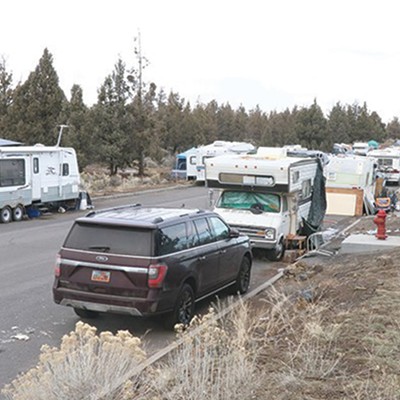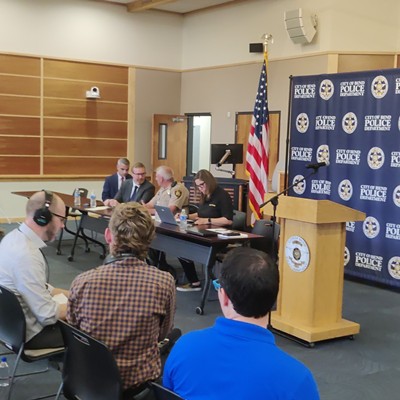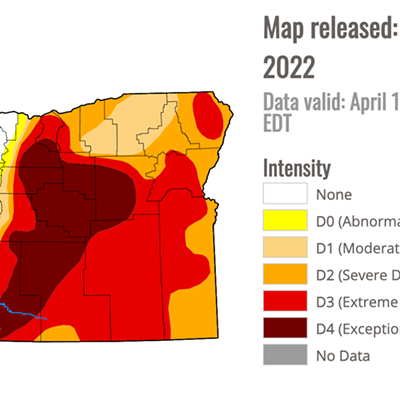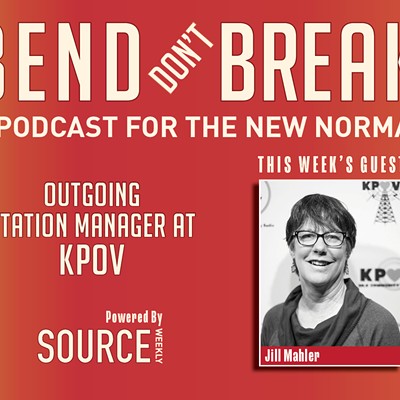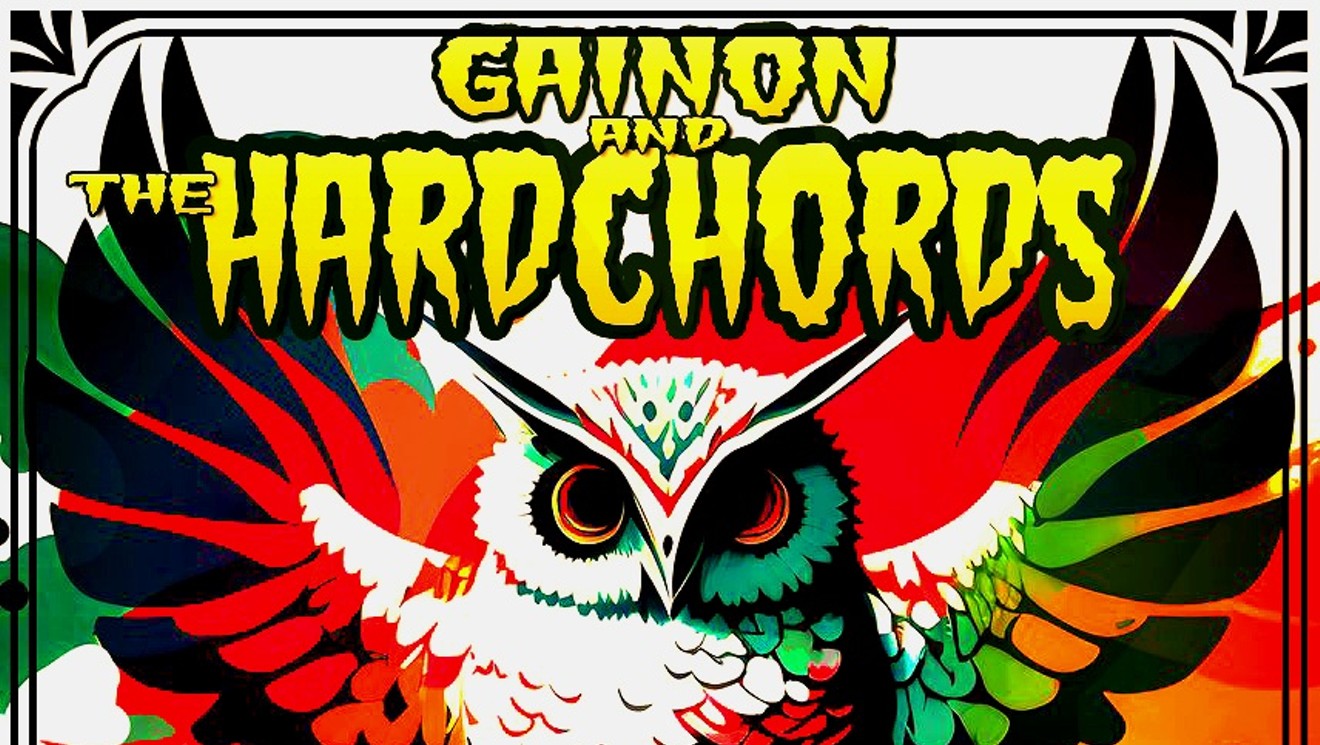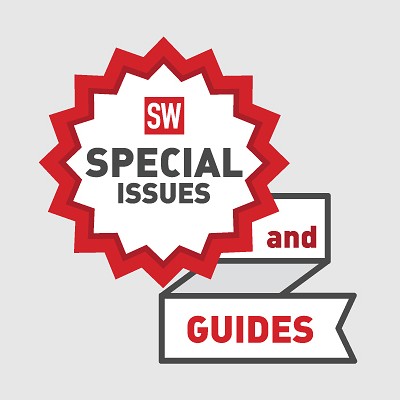COMMUTE AROUND TOWN
Here are some tips for surviving the streets—and those roundabouts
Maybe you've seen them now that the weather is getting nicer. They might have a bag slung over their shoulder, they're probably wearing a shiny helmet, riding in the rightmost lane on the road, not quite as fast as the cars but still moving along at a respectable pace. They're the bike commuters.
That could be you, too.
"The first thing I tell people is know your route," said Brian Potwin, education coordinator for Central Oregon's Commute Options nonprofit. "Oftentimes, when you're riding a bike you'll take a different route than you would if you were driving."
This might add more time to your commute, but it allows you to avoid high-stress areas where traffic might be heavier, where there is no bike lane or where there is a bike lane that abruptly ends with no warning, said Peter Powers, who has been bike commuting for more than a decade. Try using the bike option on Google Maps to help direct your way, and Potwin also recommends actively researching your route by riding it during a low traffic time, like a Sunday afternoon.
With your route down, familiarize yourself with hand signals.
"When bikes don't follow right-of-way rules, when they weave in and out of traffic, they are dangers to themselves and anyone else in the area," said David Green, who's been bike commuting for six years. Being predictable is one of the easiest ways to stay safe while you're riding, Potwin said. For that, think like the driver of a car. If you wouldn't run a red light, drive on the wrong side of the road (or drive the wrong way down the road) or roll a stop sign in a car, you shouldn't do it on a bike.
"Reducing my carbon footprint, the feeling of freedom and self-sufficiency, even in an artificial way, and the exercise are all important to me. But using the bike lane to pass a long line of cars snarled in traffic has a certain appeal." — Peter Powers
tweet this
Cyclists can also ride in the same lane as the cars, if they need to. If there's no bike lane, or if the bike lane has obstacles in it, "taking the lane," as it is often referred to, can be a safer option. In that case, make sure the lane is clear, and then signal so that drivers know you plan to move into their lane, Potwin says. Someplace where you might see this more frequently in Bend is at roundabouts.
Even though bicycles should be treated like a car, there are still some extra things a cyclist needs to do.
"I cringe when I see anyone without a helmet," said Powers. "One never knows what is going to put a bike down, and having landed on my head a few times I cannot imagine not having a helmet—however, I do not care how my hair looks."
Both Potwin and Green also recommend wearing brightly colored clothing and having lights and reflectors—which you can get fined for not having. The minimum is a white front light and a red back reflector, but Potwin encourages people to have a red light in the back for better visibility.
For Powers and Green, bike commuting is worthwhile, even if it adds extra time.
"Reducing my carbon footprint, the feeling of freedom and self-sufficiency, even in an artificial way, and the exercise are all important to me," Green said. "But using the bike lane to pass a long line of cars snarled in traffic has a certain appeal."
MOUNTAIN BIKE
If you're a noob on the singletrack, here's what you should know
You got your mountain bike, and now you're itching to hit the singletrack and ride hard. But before you take off, you want to make sure that you won't be "THAT" biker who looks (and acts) like a noob. What trails should you head to, what do you do when you see another rider, and how do you figure all that out if you don't have friends who mountain bike?
You don't have to learn these things the hard way.
"Find some friends to ride with," Shane Johnson, longtime mountain biker and owner of Dryve Wheels, advises. "If you find a group to ride with you can learn from them."
Meanwhile, Jane Quinn, a buyer at Pine Mountain Sports and manager of the Dirt Divas program, seconds that thought.
When on a two-way trail, downhill riders should yield to uphill riders, Quinn says. Uphill riders get the right of way because it's much harder to regain momentum in the middle of a hill. Riders should also yield to hikers and runners, although runners could consider if it is easier for them to step off the trail.
tweet this
Dirt Divas is a program that "seeks to empower women through mountain biking and offers women-only events, group rides twice a month with five different skill levels," she said. They also offer educational clinics and skill sessions.
Now that you have some friends to ride with, the next step is using trails properly. Many singletrack trails (trails that are wide enough for one bike only) are not bi-directional, so make sure you're riding the correct direction when you start.
When on a two-way trail, downhill riders should yield to uphill riders, Quinn says. Uphill riders get the right of way because it's much harder to regain momentum in the middle of a hill. Riders should also yield to hikers and runners, although runners could consider if it is easier for them to step off the trail.
Checking the trail conditions is another "should do," especially in the spring, so muddy trails can have time to dry out and won't get rutted, Johnson said. If you're riding a wetter trail with puddles, or if you need to step off the trail to yield, stay close to the already-made trail.
"Tread on the trail," Quinn said. "Don't create your own trail, and if you see small puddles you should ride through them, not around them."
Both Quinn and Johnson say that if a group of people are riding, it's considerate to let the person/people waiting for you know how many people are in your group. If you're bringing up the rear, let them know so they don't keep waiting, especially on singletrack trails that often have limited visibility.
After you've gone out a couple times, avoid getting overconfident. Tyler Fox, a pro rider for The Giant Co-Factory Off-Road Team, cautions beginners to start out slow.
"Don't push yourself too hard before you're ready," he advises. "There's nothing worse than riding back totally miserable, thinking you might not make it."
Because you don't have to worry about things like cars while you're mountain biking, people tend to be more relaxed and friendly when they're out on the trails. Being courteous and friendly is something that people notice, especially if you don't do it.
"Probably the most annoying thing I see when I'm biking is people not having fun," Johnson said. "Smile and wave! Why the heck are you out here if you aren't having fun?"

